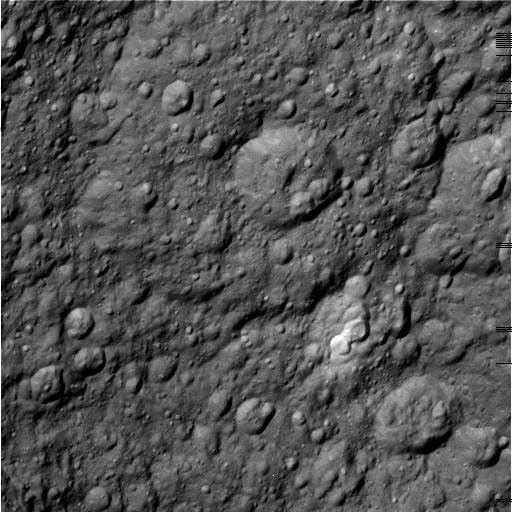Battered Rhea
| Language |
|
|---|
In this image obtained by NASA's Cassini spacecraft on its closest flyby of Saturn's moon Rhea, the heavily cratered surface of the moon appears in great detail. Just to the bottom right of the center of this image, a bright area appears to indicate a freshly excavated double crater. Double craters can appear when two gravitationally linked asteroids crash into a surface. This image was obtained by Cassini's narrow-angle camera on Jan. 11, 2011, from a distance of about 20,000 kilometers (12,000 miles) away.
This image has not been validated or calibrated. A validated/calibrated image will be archived with the NASA Planetary Data System in 2012.
For more information on raw images check out our Frequently Asked Questions section.
The Cassini-Huygens mission is a cooperative project of NASA, the European Space Agency and the Italian Space Agency. The Jet Propulsion Laboratory, a division of the California Institute of Technology in Pasadena, manages the mission for NASA's Science Mission Directorate in Washington. The Cassini orbiter and its two onboard cameras were designed, developed and assembled at JPL. The imaging team is based at the Space Science Institute, Boulder, Colo.
For more information about the Cassini-Huygens mission visit http://saturn.jpl.nasa.gov or http://www.nasa.gov/cassini . The Cassini imaging team homepage is at http://ciclops.org .
Credit: NASA/JPL/Space Science Institute





























